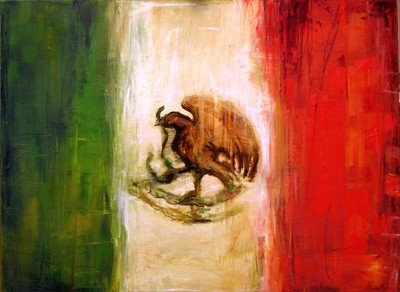Americans are up in arms -- for and against -- the enhanced scrutiny for immigrants entering the country. And for good reason. The United States have had profound consequential experience of 'illegal' immigration. In the other direction.
The Caddo Nation, a confederacy of Southeastern Native American tribes, used the word "tejas" -- which means "friends" -- as the root name for the area that is the state of Teixas, or "Texas."
Friends, indeed.
In 1821, when Mexico won its independence from Spain, Mexican Texas became part of the new nation. Soon thereafter, the Mexicans relaxed their immigration policies to allow migrants from the United States. They wanted to spur population growth and protect the province from incursion by inviting legal 'Anglo' immigrants as a buffer against the growing wave of illegal migrants from the United States. Mexico recruited settlers from the United States, Europe, and the Mexican interior -- termed empresarios -- and granted them enormous tracts of arable land.
As a result of the open immigration policy, the population of Teixas grew rapidly. In 1825, the Teixas population was 3,500 inhabitants, primarily Mexican (~90%). But by 1834, nine years later, the Teixas population had grown to 37,800 (a growth rate of +30% per year!!). Only 7,800 inhabitants were of Mexican descent in 1834 (~20%).
But the New Teixanos were surly. They openly violated Mexican law -- the laws against slavery, in particular. And illegal immigration from the United States continued to be a problem. So, in 1830, the Mexican authorities reversed course and enacted laws to prohibit immigration from the United States. The new laws also established customs duties -- known today as "border adjustments" -- angering both native Mexican citizens (Tejanos) and the farmers on either side of the border. Sound familiar?
The unrest grew to an armed insurgency in late 1835 at the Battle of Gonzales, and eventually the Teixas Revolution. The Teixans defeated the Mexican troops and subsequently began negotiations to be annexed to the United States. The expansionist President James K. Polk ultimately annexed Texas to the United States after his electoral victory in 1844. On December 29, 1845, Congress admitted Texas to the U.S. as a constituent state of the Union.
After Texas's annexation, Mexico broke diplomatic relations with the United States.
O, the irony!




